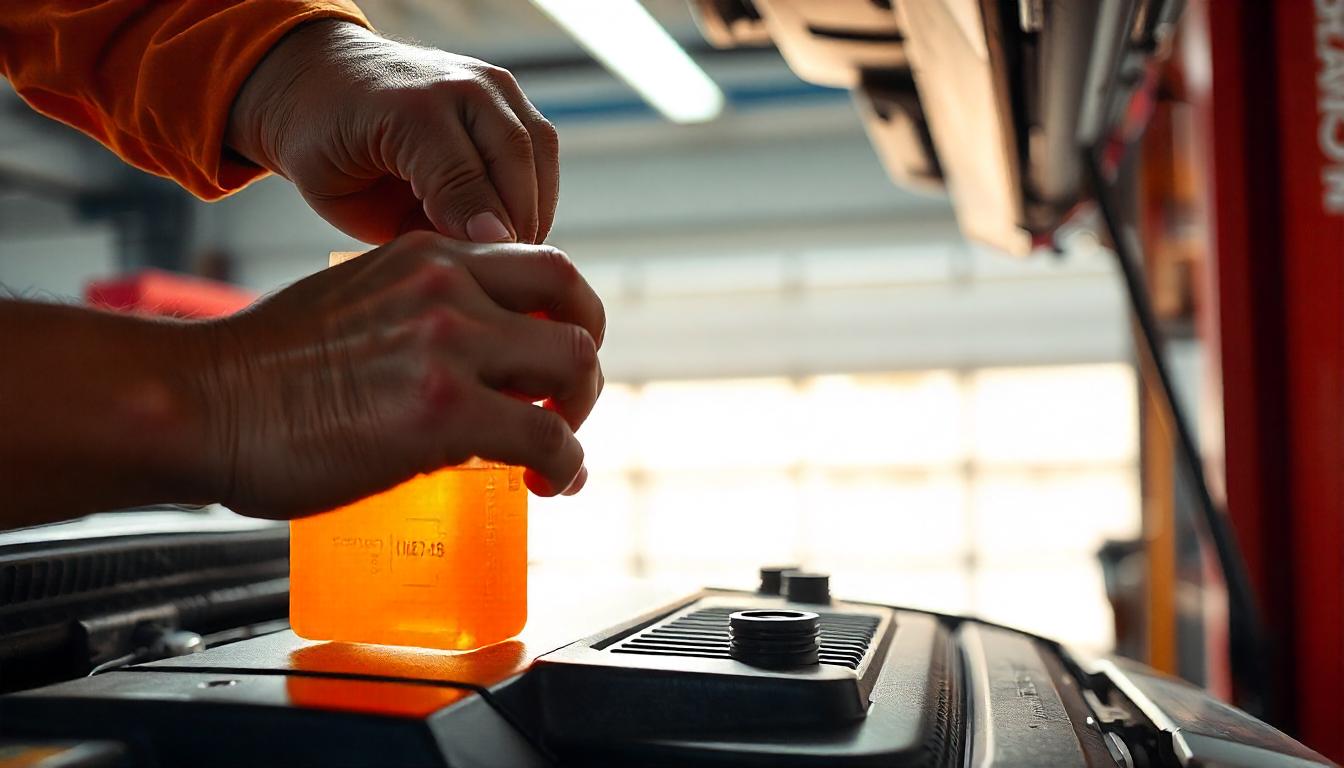Introduction
The cooling system of your 2003 Cadillac Escalade ESV plays a crucial role in maintaining engine temperature and preventing overheating. Over time, coolant (antifreeze) becomes contaminated with debris and loses its effectiveness. Regularly draining and replacing the coolant ensures that the engine operates at optimal temperatures and avoids potential damage. This guide will walk you through the process step by step.
Why You Should Drain and Replace Coolant
- Prevents Overheating – Old coolant can cause the engine to overheat, leading to serious damage.
- Prevents Corrosion and Deposits – Over time, contaminants build up in the system, which can lead to blockages and corrosion.
- Maintains Proper Cooling Efficiency – Fresh coolant ensures the engine operates efficiently and at the correct temperature.
- Protects Against Freezing – In colder climates, coolant prevents water in the radiator from freezing.
Tools and Materials Needed
- A drain pan
- A wrench or pliers
- A flathead screwdriver
- Coolant (Dex-Cool or manufacturer-recommended antifreeze)
- Distilled water
- A funnel
- A pair of gloves
- Safety glasses
- A shop rag or towel
Step-by-Step Guide to Draining Coolant
Step 1: Ensure Safety First
- Park your Escalade on a level surface.
- Turn off the engine and let it cool completely to avoid burns.
- Engage the parking brake and ensure the vehicle is in park.
- Wear gloves and safety glasses to protect yourself from spills.
Step 2: Locate the Radiator Drain Plug
- Open the hood and locate the radiator.
- The radiator drain plug (petcock valve) is usually found at the bottom of the radiator on the driver’s side.
- If necessary, use a jack to lift the front of the vehicle for better access, ensuring you secure it with jack stands.
Step 3: Drain the Old Coolant
- Place the drain pan beneath the radiator drain plug.
- Using a wrench or pliers, slowly turn the drain plug counterclockwise to open it.
- Allow the old coolant to flow into the pan completely.
- Remove the radiator cap to help the coolant drain more efficiently.
- If your vehicle has a coolant reservoir, drain it by removing the small hose at the bottom or using a siphon.
Step 4: Flush the Cooling System (Optional but Recommended)
- Close the radiator drain plug temporarily.
- Fill the radiator with distilled water.
- Start the engine and let it run for about 10 minutes with the heater on to circulate the water.
- Turn off the engine and allow it to cool.
- Drain the water by opening the drain plug again.
- Repeat this process until the drained water runs clear, ensuring all old coolant is removed.
Refilling with New Coolant
Step 5: Mix and Add Coolant
- The 2003 Cadillac Escalade ESV uses Dex-Cool coolant, which should be mixed with distilled water in a 50/50 ratio unless you are using pre-mixed coolant.
- Close the drain plug securely.
- Using a funnel, slowly pour the new coolant into the radiator until it reaches the fill line.
- Also, refill the coolant reservoir to the appropriate level.
Step 6: Bleed the Cooling System
- Start the engine and let it run with the radiator cap off.
- Turn the heater to the highest setting to allow air bubbles to escape.
- As the coolant level drops, continue adding more coolant until no more air bubbles appear.
- Once the coolant stabilizes, replace the radiator cap securely.
Step 7: Check for Leaks and Test Drive
- Inspect the area around the radiator drain plug and hoses for any leaks.
- Take the vehicle for a short drive and monitor the temperature gauge.
- After driving, check the coolant level again and top off if necessary.
Disposing of Old Coolant
- Never pour old coolant down the drain or on the ground, as it is toxic.
- Collect the used coolant in a sealed container and take it to an authorized disposal facility or recycling center.
How Often Should You Change Coolant?
The manufacturer recommends replacing the coolant every 5 years or 100,000 miles, but it’s a good idea to check its condition regularly. If the coolant appears dirty, discolored, or has particles floating in it, replace it sooner.
Common Issues and Troubleshooting
- Coolant Leaking After Drain and Refill
- Ensure the drain plug is fully tightened.
- Check for cracks in the hoses or radiator.
- Engine Overheating After Coolant Change
- There may be air pockets in the system; repeat the bleeding process.
- Ensure the thermostat is functioning correctly.
- Low Coolant Level After a Few Days
- Check for slow leaks around the water pump, radiator, or hoses.
- If leaks persist, a pressure test may be needed.
Conclusion
Draining and replacing the coolant in your 2003 Cadillac Escalade ESV is an essential maintenance task that helps keep your engine running efficiently. By following this guide, you can ensure a safe and effective coolant change, preventing overheating and prolonging the life of your vehicle’s cooling system. Regular checks and proper disposal of old coolant will keep your vehicle in excellent condition for years to come.
